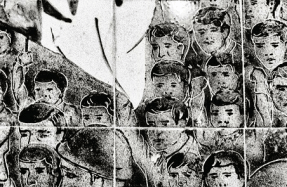
In fall 2022, the Belgian photographer Bieke Depoorter was in New York for a group show, Close Enough: New Perspectives from 12 Women Photographers of Magnum, at the International Center of Photography, where portions of her yearslong project Agata (2017–20) were on display. From there, she planned to travel to California and Oregon to continue her work on another ongoing project, begun in 2015, called Michael. Both are visual studies of a person Depoorter is interested in photographing—Agata Kay (her last name is a pseudonym) is a performer and former sex worker who Depoorter encountered in Paris in 2017; Michael is an elderly man whom Depoorter struck up an unlikely acquaintance with on the streets of Portland in 2015—but both are also about the complex and uncomfortable ways a photographer can become enmeshed in the life of her subject. “I don’t really pick my projects,” Depoorter tells me. “They happen to me. They become part of my life and that can become very overwhelming.”

At thirty-six, Depoorter possesses a quiet confidence that makes it possible to understand how someone would be at ease with her when she’s behind the camera. Ever since she began taking pictures, Depoorter has been preoccupied with the ethical questions surrounding the art. What is exploitative? What is purely in the self-interest of the photographer? “In school, I always felt very uncomfortable photographing someone on the street without their consent,” she says. “I really love documentary-style photography, but I always had a feeling that I was stealing images of people. I want to have






